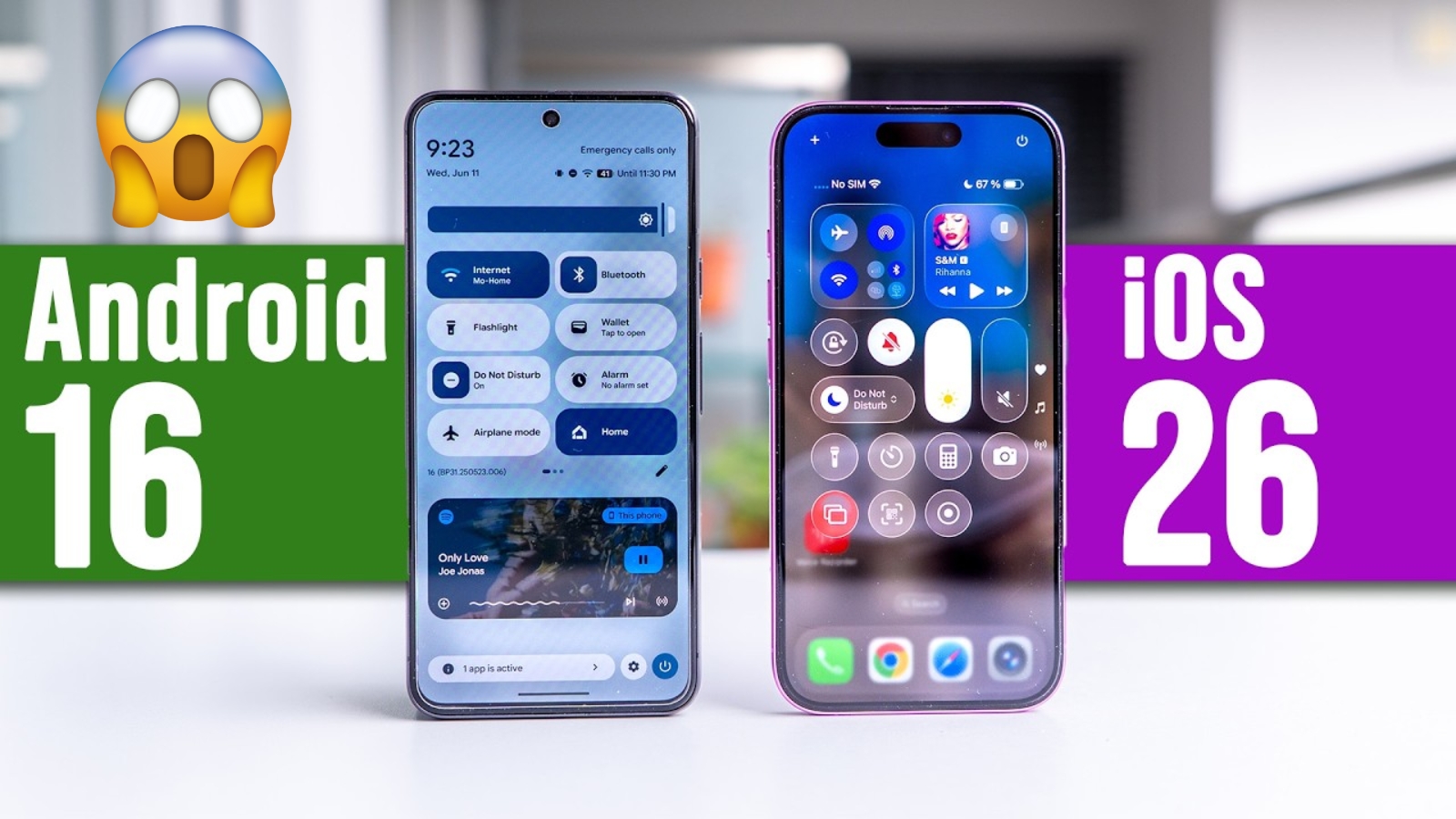Your smartphone is about to get a major makeover. Both Apple and Google are rolling out their most ambitious mobile operating system updates in years, and the changes go far beyond simple tweaks. Whether you’re carrying an iPhone or Android device, these updates will fundamentally change how your phone looks, feels, and works.
iOS 26: Apple’s Glass Revolution
Apple’s iOS 26 introduces something called “Liquid Glass” – and it’s exactly as mesmerizing as it sounds. This isn’t just a minor visual refresh; it’s Apple’s biggest design overhaul since iOS 7 back in 2013.

What Makes Liquid Glass Special
The new design creates a translucent effect throughout your iPhone interface. App icons, menus, and controls now have a glass-like quality that reflects and refracts light naturally. When you change your wallpaper, the entire interface subtly shifts its appearance to match, creating a cohesive visual experience that feels almost magical.
But here’s the thing – some users with bright wallpapers are finding text hard to read through all that transparency. Apple heard the feedback and added a “Reduce Transparency” option in the accessibility settings. It’s a small reminder that even revolutionary design needs practical adjustments.
Features That Actually Matter
Beyond the visual spectacle, iOS 26 brings genuinely useful improvements:
- Interactive Widgets: Finally, you can control music, smart home devices, and apps directly from your home screen without opening anything
- Call Screening: Your iPhone can now answer spam calls for you and determine what the caller wants (yes, Android users, we know you’ve had this since 2019)
- Hold Assist: Never wait on hold again – your phone will monitor the call and alert you when a human picks up
- Real-time Translation: Translate conversations, messages, and even songs as they happen
Android 16: Expressive by Design
Google took a different approach with Android 16. Instead of glass-like transparency, they focused on what they call “Material 3 Expressive” – a design language that makes your phone feel more alive and responsive.
Animations That Actually Feel Good
The standout feature isn’t visual – it’s tactile. When you dismiss a notification, other notifications subtly react to your swipe. Close an app in your recent apps screen, and nearby app cards create a gentle ripple effect. These aren’t just pretty animations; they’re paired with haptic feedback that makes your phone feel more responsive to your touch.
Smart Improvements Where They Count
Android 16 focuses on practical enhancements:
- Live Activities: Get real-time updates for food delivery and ride-share apps without constantly opening the app
- Grouped Notifications: No more notification chaos – related alerts automatically group together
- Desktop Mode: Connect your phone to a monitor and work with desktop-style windows and a taskbar
- Better Hearing Aid Support: Improved integration for users who rely on hearing assistance devices
The Design Philosophy Battle
| iOS 26 Features | Android 16 Features |
|---|---|
| Liquid Glass transparency effect | Material 3 Expressive animations |
| Interactive home screen widgets | Live Activities for real-time updates |
| Call Screening and Hold Assist | Advanced notification grouping |
| Real-time translation capabilities | Desktop Mode for external displays |
| Visual Intelligence camera features | Enhanced hearing aid compatibility |
| Apple Intelligence integration | Improved customization options |
The approaches couldn’t be more different. Apple wants your interface to fade into the background, letting content shine through layers of digital glass. Google wants your phone to feel more human, with animations and feedback that respond naturally to your interactions.
What This Means for You
If you’re an iPhone user, iOS 26 will make your device feel more premium and cohesive. The Liquid Glass effect creates a unified aesthetic that’s undeniably beautiful, though you might need to adjust some accessibility settings if you use bright wallpapers.
Android 16 users get a more playful, responsive experience. The focus on animation and haptic feedback makes everyday interactions feel more satisfying, while practical features like Desktop Mode open up new ways to use your device.
The Bigger Picture
Both updates represent something important: mobile operating systems are maturing. We’re moving beyond basic functionality toward experiences that feel more human and intuitive. iOS 26 achieves this through visual elegance, while Android 16 does it through responsive interactions.
The timing is interesting too. Apple is clearly borrowing ideas that Android has offered for years (call screening, location tracking, better widgets), while Google continues to refine the customization and flexibility that has always been Android’s strength.
Your phone’s next update isn’t just about new features – it’s about a fundamentally different relationship with your device. Whether you prefer Apple’s glass elegance or Google’s expressive animations, 2025 is shaping up to be the year mobile interfaces finally feel truly next-generation.
The choice between them ultimately comes down to your priorities: pristine visual design with iOS 26, or responsive, customizable interactions with Android 16. Either way, your phone is about to become a lot more interesting to use.
Frequently Asked Questions
Q: When will these updates be available?
A: iOS 26 launches in September 2025, while Android 16 is already rolling out with Material 3 Expressive arriving in Q3 2025.
Q: Will older phones support these new features?
A: iOS 26 supports iPhone 11 and newer, but advanced features need iPhone 15 Pro or iPhone 16 models. Android 16 availability varies by manufacturer.
Q: Can I try these features early?
A: Yes! Both Apple and Google offer public beta programs, though expect some bugs and battery drain during testing phases.
Widebody Hyundai i30 N Wagon Rendered With Aggressive New Look
